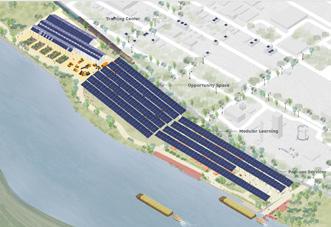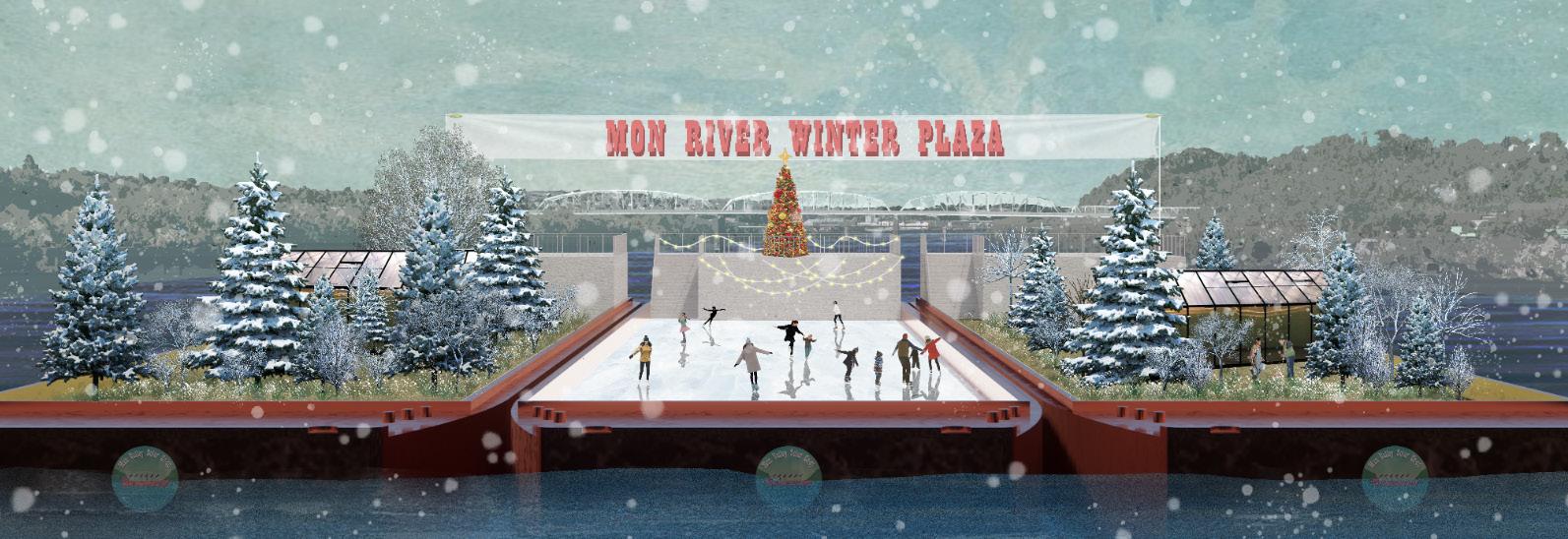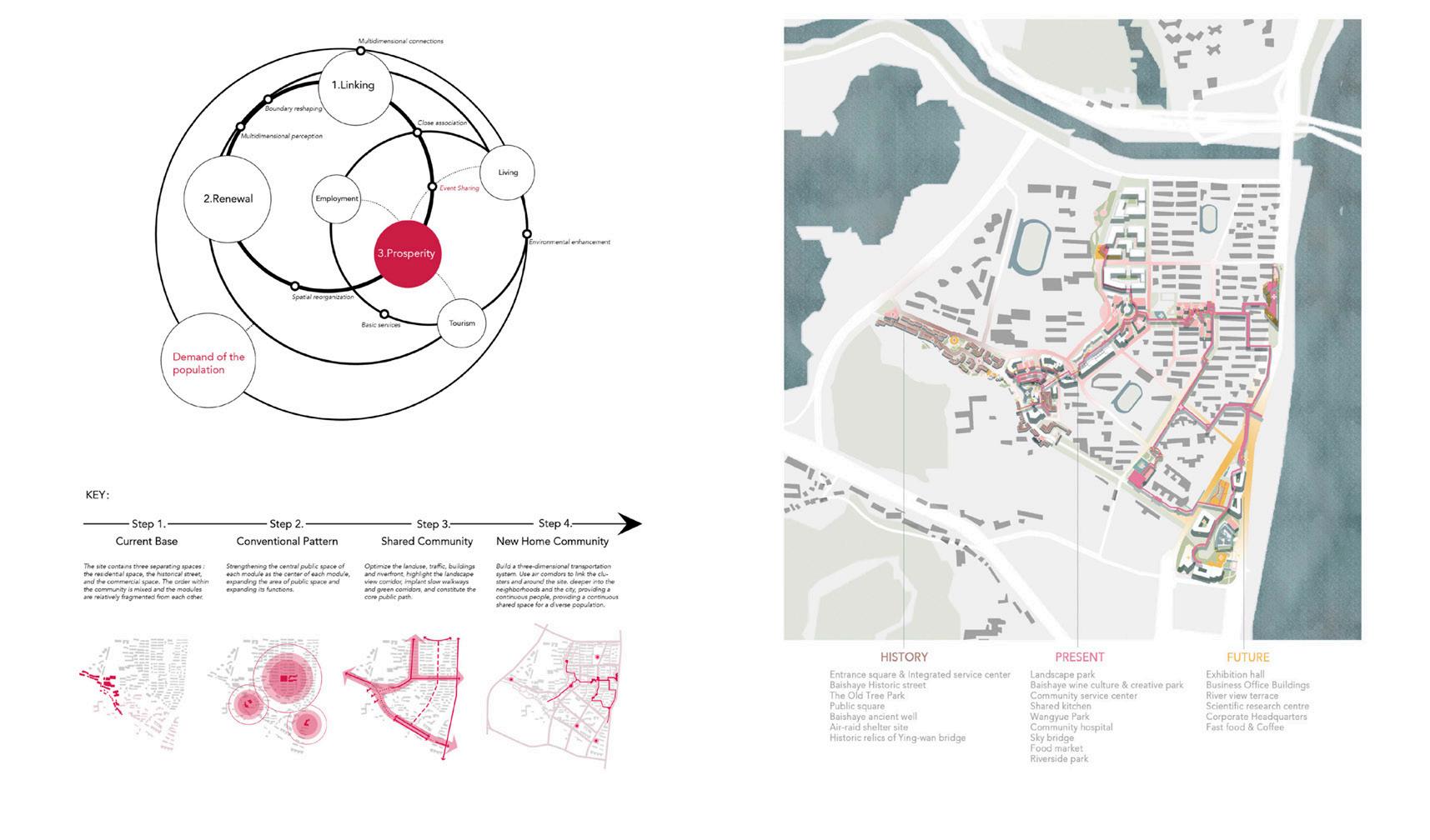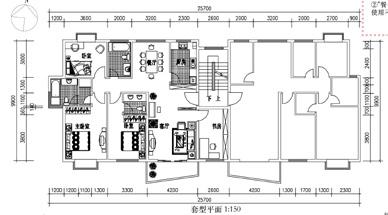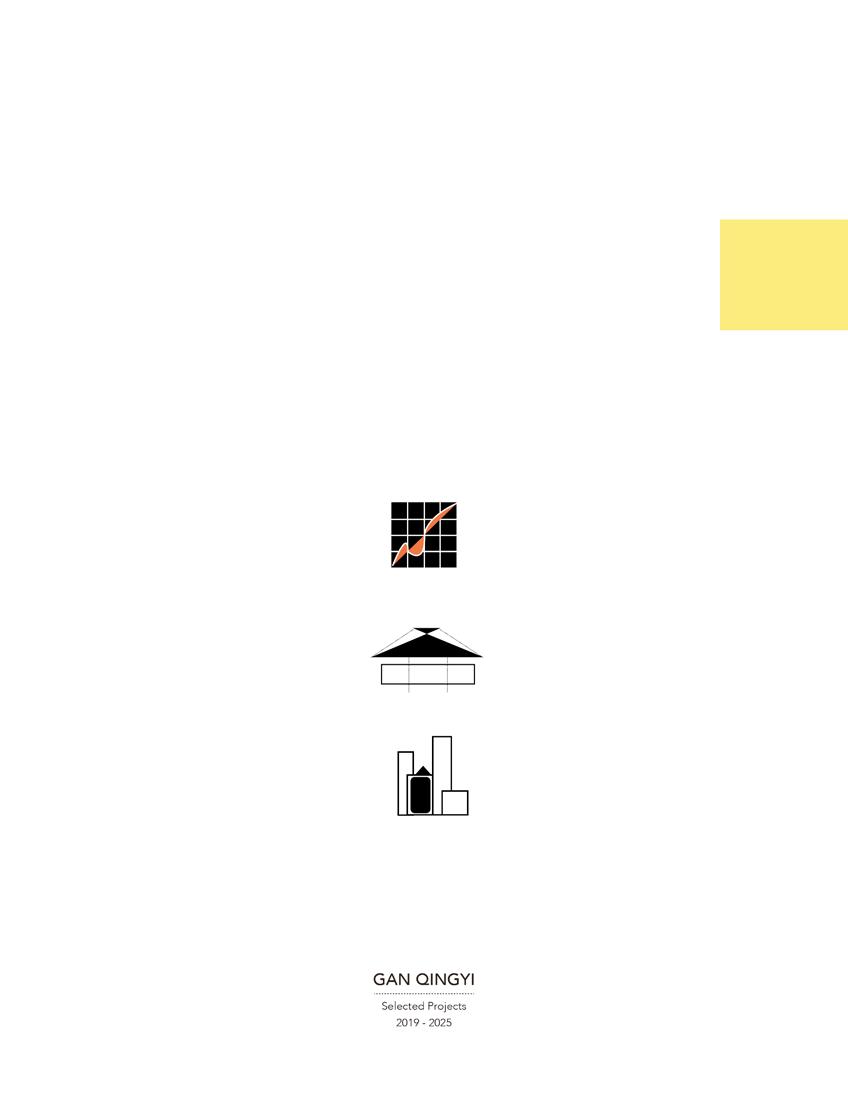Qingyi Gan (Eva)
Mon Valley Solar Co-op Group Work 2024.09-2024.12
Location: Braddock, Pennsylvania Project Type: School Work Team: Qingyi Gan, Bria Miller, He Dong, Seunghu Kim (4)
Instructor: Thad Pawlowski, Nadine Maleh, Miriam Harris, Lee Altman, Sam Carter, Julia Murphy, Chris Kroner, Katie Swenson, Cecily King, Angel Langumas
This project envisions a regional framework to reimagine the river through collective work and regenerative community-led development.Spearheaded by a locally-based coalition, it seeks to reclaim power for those who continue to be disenfranchised by a multiplicity of systemic abuse.
Drawing from the legacy of the steel industry, the project reclaims iconic water-based infrastructure by retrofitting a tugboat and barge with solar energy systems, energy storage, and adaptable deck configurations. These enhancements enable a wide range of programmatic activities, redefining interactions with the riverfront, challenging class-based norms, and fostering community empowerment through a shared, multifunctional asset.
SITE ANALYSIS OF MON VALLEY
BRADDOCK WATERFRONT
ECONOMIC, ENVIRONMENTAL & SOCIAL IMPACT
9,457,200
Boat Section
View from the 11th Street
Workforce landscape under the solar panels
Barge tour to Braddock as a seed
BARGE CONFIGURATIONS
Different barge Typologies can be combined to gether and form the onto the river
Barge Operation
No Food on Trucks
Group Work 2024.05-2024.08
Location: Bronx, New York
No Food on Trucks
Group Work 2024.05-2024.08
Location: Bronx, New York
Project Type: School Work
Team: Qingyi Gan, Yun Pei Lee, Jingxian Yang, Dolyagritt Wonggom (4)
Project Type: School Work
Instructor: Nans Voron, Sagi Golan, Grant McCracken, Austin Sakong, Sean Gallagher, Daphne Lundi, Mario Ulloa, Ankita Chachra, Candelaria Gassiebayle
Under the current state of climate change, people will find it increasingly difficult to access food, especially vulnerable groups. How can the food system be distributed more equitably and sustainably for everyone?
We envision eliminating the use of highly polluting trucks and, using the Bronx as an example, exploring the distribution of food at every step from port to table.
Under the current state of climate change, people will find it increasingly difficult to access food, especially vulnerable groups. How can the food system be distributed more equitably and sustainably for everyone?
We envision eliminating the use of highly polluting trucks and, using the Bronx as an example, exploring the distribution of food at every step from port to table. 02
No Food On Trucks On 2100
We support the integration of existing infrastructure like operating railroads, abandon railroads, ferry lines, and underused marinas and transfer station
to weave a new decentralized food distribution network
Proposed in-land food connection corridor
Operating rail that will carry food along with serving the people.
Re-utilize abandoned railroads into new localized corridors
Proposed new food node/tranfer point
Proposed new barges route to intervention site Potential area for estrablish localized food corridor
MOTT HAVEN COMMUNITY FOOD CENTER
HORIZON EDUCATION AND SKILL TRAINING CENTER
The Linkage Path
Spatial Connection: Revitalizing Project for Wangyuehu Community
Group Work 2023.09-2023.12
Location: Changsha, Hunan
Project Type: School Work
Team: Qingyi Gan, Yan Hongzhuang (2)
Instructor: Jiang Min
Investigating why strategically located urban areas face developmental challenges, this project aims to delve into the site's history, establish connections with its cultural context, and weave together both internal and external aspects of the site.
Internally, the goal is to create unobstructed pathways, facilitating the convenient living of diverse communities gathered in the area. Externally, the project seeks to integrate seamlessly with the city, serving as a crucial node in urban connectivity, fostering mutual development between the district and the city.
Through multiple spatial connections, making the site a renaissance nexus to the whole surounding area.
DIVERSE GROUPS AND THEIR FLOW LINES
Xihu Park
The Longwanggang River
River Xiang
Tie a Kont at Home
Reunion of Urban and Rural lives: Rural Residential Renovation Project
Group Work 2021.07-2021.10
Location: Xiangxi, Hunan, China
Project Type: HNU Village Workshop
Team: Qingyi Gan, Yan Hongzhuang,Wen Yunying,Wang Shiyi,Chen Linchuan,Tan Suoyuan (7)
Instructor: Sun Liang
In China, where the urban-rural binary is evident, many rural regions are experiencing significant labor outflows. Thus strengthening the connection between urban and rural areas and creating a better living environment for minority groups residing in this remote mountains is the main focus of my project.
aim to construct a home for rural residents, a home that not only aligns with their traditional understanding of a family dwelling spatially but also provides them with additional income. The project seeks to enhance the emotional connection of local residents to their region, fostering a sense of emotional belonging. Simultaneously, they can invite friends from the city to their homes, promoting the integration of urban and rural cultures.
The project translates local architectural forms, utilizing indigenous materials and incorporating cultural elements, promoting environmental sustainability and local distinctiveness.
From the Second Floor of the Multifunctional Building
On the Roof
Reflaction: A Meditative Archetecture Design
Indivadual Work 2023.04-2023.07
Location: Manhattan, New York, United States
Project Type: International Competition
Instructor: Adam Sun
To foster a healthier well-being and guide people towards a more mindful lifestyle in the fast-paced urban environment, aim to construct a tranquil retreat—a haven for individuals to take a pause and rejuvenate.
Design considerations that actively support and nurture the practice of mindfulness by integrating natural elements and creating a multisensory experience that calms the mind and soul, harmoniously blend the serenity of meditation spaces with the dynamic energy of the urban environment.
Like ancient caves, the meditative architecture serves as a secure refuge, allowing individuals to observe their surroundings from a safe corner. Simultaneously, this space enables introspection, providing individuals with an opportunity to gaze within themselves, establishing a connection between one's physical and spiritual realms.
The site is located in the bustling area of Manhattan















